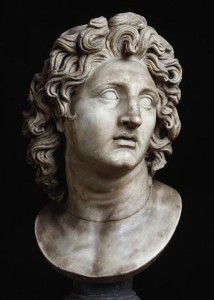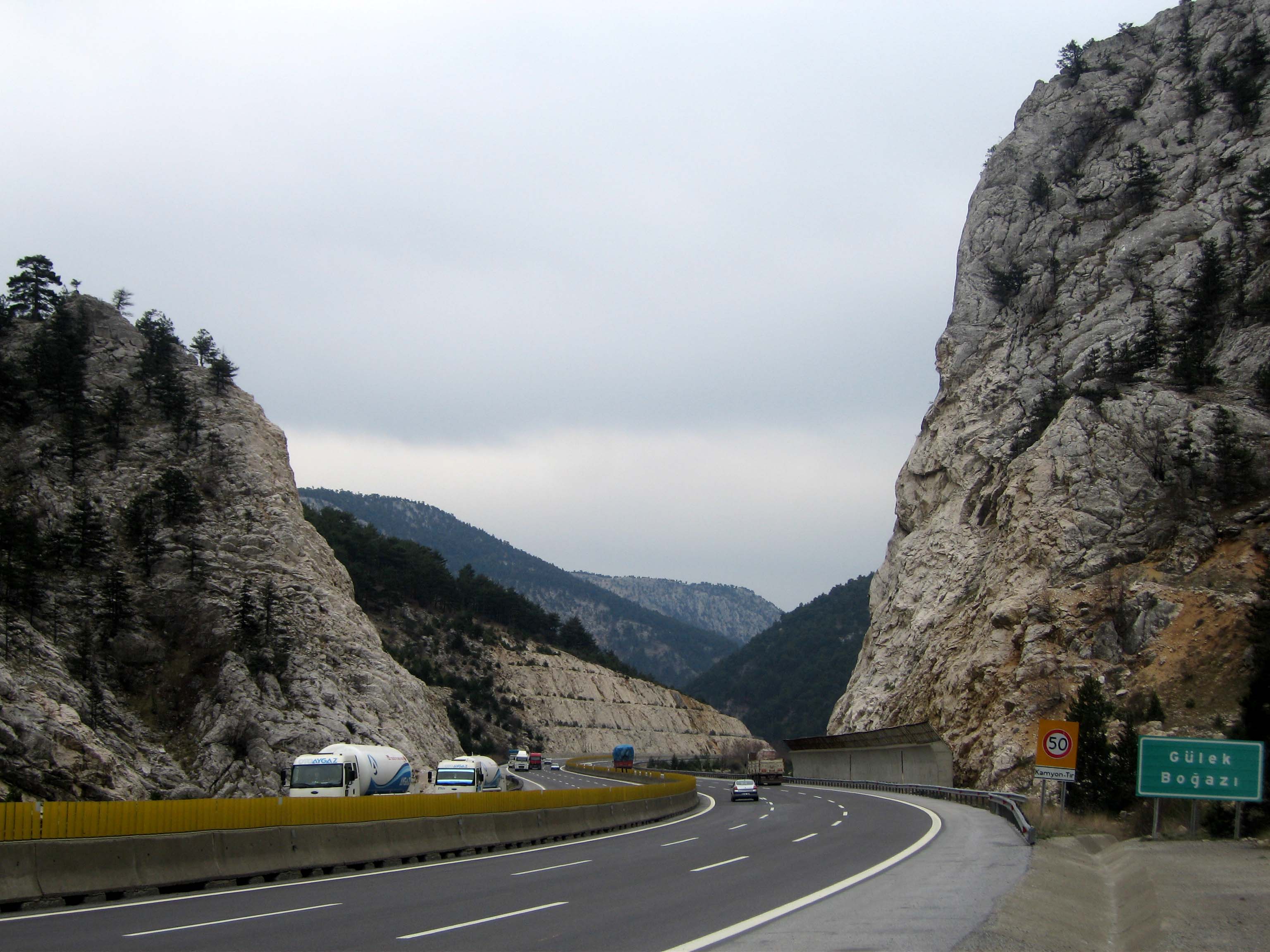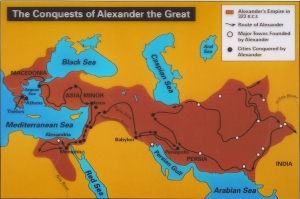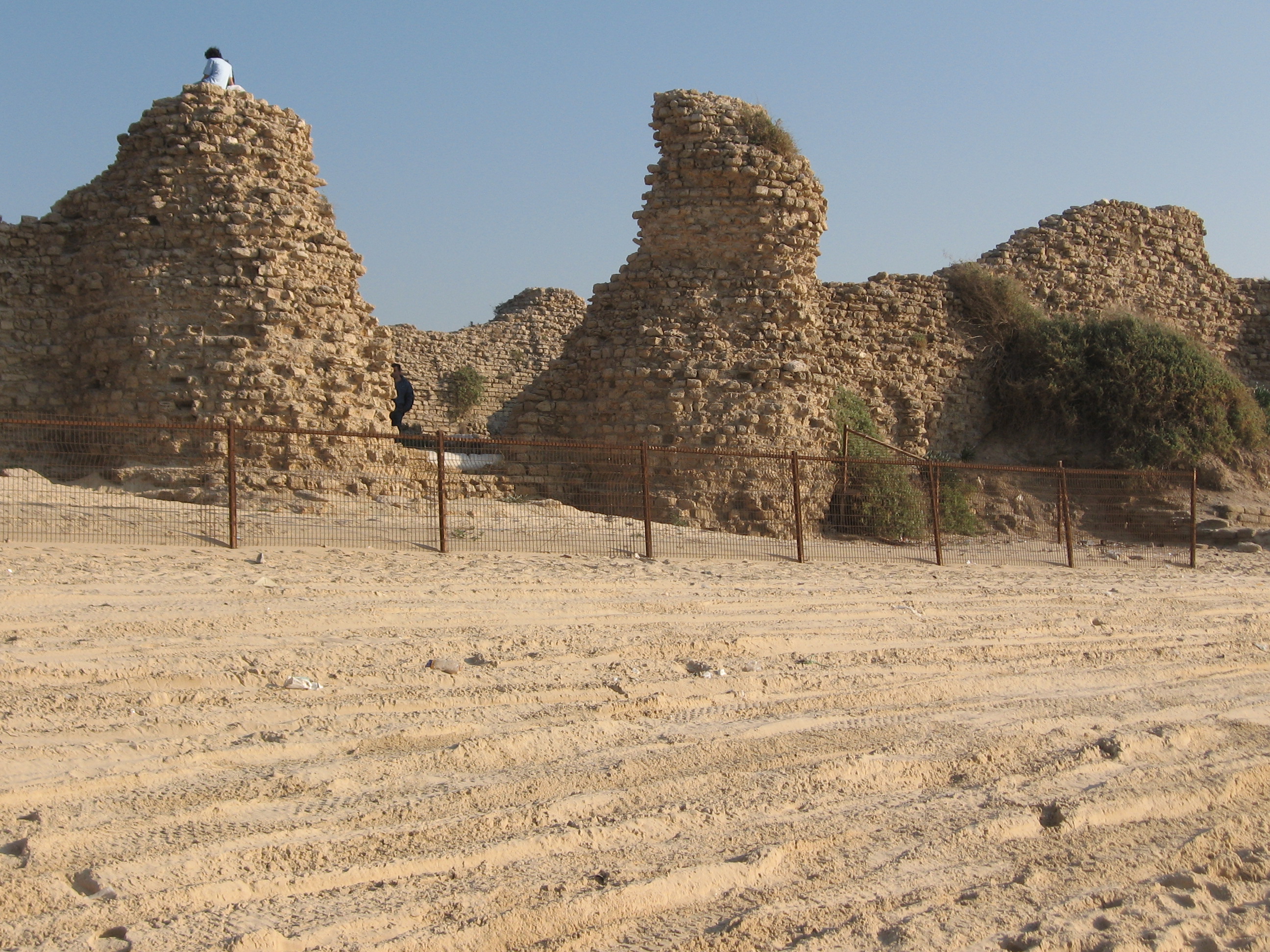The Coming of The Greeks
 Chapters 9-14 consists of 2 oracles. The first one presents Messiah as the king rejected, who though rejected is never-the-less triumphant [Zech 9: 1-11:17]. The second one advances that this rejected king, is to be the king enthroned [Zech 12:1-14:21]. The writing style is completely different from the preceding messages of encouragement. These two Oracles are meant to be taken as one entire prophecy. But because of their length and detail we are going to divide them into small sections.
Chapters 9-14 consists of 2 oracles. The first one presents Messiah as the king rejected, who though rejected is never-the-less triumphant [Zech 9: 1-11:17]. The second one advances that this rejected king, is to be the king enthroned [Zech 12:1-14:21]. The writing style is completely different from the preceding messages of encouragement. These two Oracles are meant to be taken as one entire prophecy. But because of their length and detail we are going to divide them into small sections.
The first eight verses of this Oracle form an outline of the history of Judah from the days of Zechariah to the rejection of Messiah. They serve as a literary break from the previous eight chapters which are devoted to the repentance of Judah, the rebuilding of the temple, and the restoration of the priesthood. Following the judgments on the city-states listed, the oracle turns to the coming of the Messiah and His work. Here in Zechariah, along with Isaiah 53 and Daniel 9, we have the most complete prophetic views of who the Messiah is, when he will come, and the nature of his ministries.
FYI: In Hebrew, the same word can mean either oracle or burden, it is a homonym. The Hebrew language lends itself to a lot of word play, and the Scriptures are full of such amusements. However, most of the paronomasia (puns) in the Bible are lost in translation. The fact that “masa” means both oracle and burden is turned into a pun by Jeremiah. Here the people ask, “what is the oracle of the LORD,” and are told that “they are His burden.”[ Jer. 23:33].
The word of the LORD is His burden or a burden to these “peoples” that have plagued the children of Israel. These pronouncements upon Judah’s enemies are the result of the four chariots of Zechariah 6 with red, black, white and dappled horses patrolling the earth prior to judgment. It is as if He has had enough of them. The weight of the chariot judgments are now resting upon them. Here we will link the judgment of the city-states to those patrolling chariots.
The Patrolling Horses of Zechariah 1 and the Judgments on Judah’s enemies of Zechariah 9:1-8:
 In Zechariah 1: 8, there was a man riding on a red horse who is later identified as the LORD. The patrolling horses report that the earth is at rest and the angel asks the LORD how long Jerusalem will be unanswered (verse 12) or un-avenged. In verse 14, His jealousy for Jerusalem and for Zion will result in His anger at these nations who are at ease. And again, in verse 21, the LORD would cast down the nations who “lifted up their horns, or power, against the land of Judah to scatter it”(See Also: Zechariah 1:18-19 The Four Horns and the Four Smiths)
In Zechariah 1: 8, there was a man riding on a red horse who is later identified as the LORD. The patrolling horses report that the earth is at rest and the angel asks the LORD how long Jerusalem will be unanswered (verse 12) or un-avenged. In verse 14, His jealousy for Jerusalem and for Zion will result in His anger at these nations who are at ease. And again, in verse 21, the LORD would cast down the nations who “lifted up their horns, or power, against the land of Judah to scatter it”(See Also: Zechariah 1:18-19 The Four Horns and the Four Smiths)
EAST COUNTRY Zechariah 6:1-6, chariots with red horses, Persia at Peace
In Zechariah 6, chariots with red (adam) horses are mentioned coming out between two mountains, but do not appear to be sent patrolling. The implication is that the empire was already judged – Babylon was no longer. In Zechariah 9:1-8 we see no judgment upon any peoples from the East.
NORTH COUNTRY Zechariah 6:6, chariots with black horses; Judgment upon Hadrach
 Zechariah 9:1-4 addresses the judgment upon the land to the north of Judah, while the eyes of men, especially Israel, are watching the cities: Hadrach, Damascus, Hamath, Tyre and Sidon. Special mention is made of Tyre and Sidon’s “wisdom” in building an impressive port empire and her wealth; however the LORD will tear down and throw her into the sea.
Zechariah 9:1-4 addresses the judgment upon the land to the north of Judah, while the eyes of men, especially Israel, are watching the cities: Hadrach, Damascus, Hamath, Tyre and Sidon. Special mention is made of Tyre and Sidon’s “wisdom” in building an impressive port empire and her wealth; however the LORD will tear down and throw her into the sea.
We also learn of the judgment on the enemies of Judah and Israel, who they are and what specific judgment is being meted out to them.
The city-states
Zech. 9:1-8 An Oracle
1 The word of the LORD is against the land of Hadrach
and will rest upon Damascus.
For to the LORD belong the cities of Aram,
even as all the tribes of Israel;
2 Hamath also, which borders thereon,
Tyre and Sidon, though they are very wise.
3 Tyre has built herself a rampart,
and heaped up silver like dust, and gold like the dirt of the streets.
4 But lo, the Lord will strip her of her possessions and hurl her wealth into the sea,
and she shall be devoured by fire.
.
FYI:
Hadrach – the capital of the principality of Lu’ash, southwest of Aleppo. “Until recent times, there had been considerable uncertainty as to the identification of Hadrach in Zec. 9:1, but the Zakir Stele discovered at Hamath refers to the city of the Hazrek (or Hadrach) as the capital of the principality of Lu’ash. It lay southwest of Aleppo and north of Hamath. It seems that Lu’ash contracted an alliance with Hamath and succeeded in defeating Benhadad II of Damascus. “ A Survey of the Old Testament Introduction by Gleason Archer Jr., Moody Press, Chicago: 1975.
Damascus – one of the oldest continuously inhabited cities in the world. It is presently the capital of modern Syria.
Hamath – name means fortification, on the Orontes river in present day Syria.
A large sign which marks the ancient city of Tyre as protected cultural property according to the 1954 Hague Convention for the Protection of Cultural Property in the Event of Armed Conflict
Tyre – a Phoenician port city in what is now Lebanon. Although there is a modern city of the same name north on the coast. The original ancient city is in ruins (in the sea) and is a UNESCO World Heritage Center.
Sidon – a port city and the ancient capital of Phoenicia. It is halfway between Tyre and Beirut in modern Lebanon.
WEST COUNTRY Zechariah 6:6, chariots with white horses, or the Rising Greek Power
The chariot with the white horse is mentioned in Zechariah 6:6 as going towards the west. There is no empire or nation to the west of Judah. In fact, west is in the Mediterranean Sea. The sea at the time of Zechariah was for all intent and purposes the realm of the Phoenician/Canaanites. They ran their large trading empire out of Tyre.
Although the Persian Empire was at rest, the cities that are now Syria, Lebanon, and Gaza, were about to face the invading troops of Alexander the Great. This first part of the oracle is largely concerned with coming judgment on these city-states, in the form of an invasion by the Greeks under Alexander in 332 B.C. The white horses and chariots go toward the west country [Zech 6:6] or the Mediterranean Sea. The power controlling trade on the Mediterranean is about to shift from the Phoenicians, whose nerve center was Tyre and Sidon, to the Greeks. This change in the fortune of nations caused the Phoenicians to relocate their cultural and economic interests to Carthage.
Xerxes III (The Ahasuerus of Esther) made one of those great blunders in history by crossing the Aegean Sea by poking the sleeping dragon, Greece, in the eye. In a battle that Hollywood has now made famous “The Battle of the 300”, just 300 men held off the Persian army until the Spartans and the Greek fleets arrived to stop the invasion. Xerxes fled back to his palaces where he spent the rest of his reign amusing himself with his harem.
But, he had stirred up the Greeks. They now understood that they could not continue as separate city-states, they needed to unite, if only to be able to protect themselves from another invasion. Philip of Macedon sets out to do just that, and upon his death turned a nearly unified kingdom over to his son Alexander.
 In 334 BC, Alexander crossed the Hellespont and invaded the Persian Empire. Alexander’s army crossed the Cilician Gates in 333 BC, and defeated the main Persian army under the command of Darius III at the Battle of Issus in November 332 BC.
In 334 BC, Alexander crossed the Hellespont and invaded the Persian Empire. Alexander’s army crossed the Cilician Gates in 333 BC, and defeated the main Persian army under the command of Darius III at the Battle of Issus in November 332 BC.
In one of the most famous battles in history, Tyre fell in 332 BC. The ancient city of Tyre was in two parts, a mainland town and an island fortress off the coast of Lebanon. Alexander’s men dismantled the mainland town and built a causeway out to the island, taking seven months to do so. The island, now a small peninsula, has never been rebuilt.
After this defeat, the Phoenicians moved their center of operations to Carthage in northern Africa. Those who remained in Tyre rebuilt their city a little north of the old, as the causeway changed the currents and made the area around what had been Tyre too shallow. The new Tyre continued to be an important shipping center until the Muslims arrived.
 Alexander then went south into Egypt where he was welcomed on November 14, 332 BC. They went so far as to anoint him pharaoh in Memphis. Leaving Egypt in 331 BC, Alexander marched eastward into Mesopotamia (now northern Iraq) and again defeated Darius III, at the Battle of Gaugamela. He went on to invade what is now Afghanistan and India in 326 BC, and died in Babylon in 323 BC. Upon his death the Empire was split between 4 of his Generals .
Alexander then went south into Egypt where he was welcomed on November 14, 332 BC. They went so far as to anoint him pharaoh in Memphis. Leaving Egypt in 331 BC, Alexander marched eastward into Mesopotamia (now northern Iraq) and again defeated Darius III, at the Battle of Gaugamela. He went on to invade what is now Afghanistan and India in 326 BC, and died in Babylon in 323 BC. Upon his death the Empire was split between 4 of his Generals .
Zech. 9:5 Ashkelon shall see it, and be afraid;
Gaza too, and shall writhe in anguish;
Ekron also, because its hopes are confounded.
The king shall perish from Gaza; Ashkelon shall be uninhabited;
6 a mongrel people shall dwell in Ashdod;
and I will make an end of the pride of Philistia.
7 I will take away its blood from its mouth,
and its abominations from between its teeth;
it too shall be a remnant for our God;
it shall be like a clan in Judah,
and Ekron shall be like the Jebusites.
8 Then I will encamp at my house as a guard,
so that none shall march to and fro;
no oppressor shall again overrun them,
for now I see with my own eyes.
SOUTH COUNTRY Zechariah 6:6, chariots with dappled horses; Ashkelon, Gaza, Ekron, and Ashdod
The Philistines had five cities on the coastal plain in what is now called the Gaza strip: Ashkelon, Gaza, Ekron, Ashdod, and Gath. (Gath is not mentioned in this prophecy because it wasn’t inhabited at that time.)
The Philistines had been a thorn in the side of the people of Israel for centuries. Even the great Samson did not destroy them, nor did Saul or David. They lasted until Hezekiah smote them [2 Kings 18:8] and then disappear from the historical record. Assyrian or Egyptian records do not mention them after this, so, one must conclude that Hezekiah smote them thoroughly.
Here in Zech 9:6 it says that the area is inhabited by a mongrel people, most likely a group of people planted by the Greeks to “colonize”. The Hebrew is more earthy and calls them “mamzer”, which is bastard. These are not the Philistines, not the warrior giants of the famed Goliath and his brothers. These are people that have moved into the area after the Philistines were smote.
As Alexander moved down the coast toward Egypt any city that did not surrender was wiped out. This must have caused great anguish to those living futher down the coast, witnessing one great city after another fall to the Greeks. It’s recorded that those who witnessed Alexander the Great’s destruction of Hadrach and Damascus were anguished by the judgment that fell on them.
 Alexander the Great besieged Gaza, the last city to resist his conquest on his path to Egypt, for five months before finally capturing it 332 BC. The inhabitants were either killed or taken captive. Alexander then brought in local Bedouins to repopulate the city, and organized it into a polis, or “city-state”. After the Greeks arrived, Ashkelon became an important Hellenistic seaport. Ashdod prospered under the Hellenistic rule.
Alexander the Great besieged Gaza, the last city to resist his conquest on his path to Egypt, for five months before finally capturing it 332 BC. The inhabitants were either killed or taken captive. Alexander then brought in local Bedouins to repopulate the city, and organized it into a polis, or “city-state”. After the Greeks arrived, Ashkelon became an important Hellenistic seaport. Ashdod prospered under the Hellenistic rule.
The LORD says that Ekron will no longer desire to attack Judah and that they will no longer continue in their abominations or their hatred of Judah. They will no longer prey upon the Jews, but rather become like a clan of Judah, a remnant people. Ekron shall be like the Jebusites, or a people who cannot be driven out, and continued to live beside the Jews until they were absorbed into the nation.
 That is indeed what happened under the Hasmoneans. Ashdod became part of Judea during the Hasmonean Revolt. Judas Maccabeus arrived at its gates, but did not conquer it. He left it for his brother Jonathan, who conquered it in 147 BC, he then destroyed the Temple of Dagon. I will take away its blood from its mouth, and its abominations from between its teeth is a reference to idolatrous sacrifices and forbidden food from ceremonially unclean animals that were offered at the temple by the Greeks. In the end Ashdod also became part of the Hasmonean Kingdom.
That is indeed what happened under the Hasmoneans. Ashdod became part of Judea during the Hasmonean Revolt. Judas Maccabeus arrived at its gates, but did not conquer it. He left it for his brother Jonathan, who conquered it in 147 BC, he then destroyed the Temple of Dagon. I will take away its blood from its mouth, and its abominations from between its teeth is a reference to idolatrous sacrifices and forbidden food from ceremonially unclean animals that were offered at the temple by the Greeks. In the end Ashdod also became part of the Hasmonean Kingdom.
All these cities were judged, the Assyrian cities, the Canaanite/Phoenician cities, as well as the cities of Philistia. The LORD guarded Judah and no conquerer overran them, they were not oppressed. Oppressed is the same Hebrew word as “slave-drivers” or “the taskmasters” of Egypt.
God protected them from the great wrath of these empires. The nations around them were gone, never to return. The enemies that Saul and David had known were removed from their places. After the Hasmoneans took back the temple, there were very few problems with the Greeks. All went well for the small nation of Judah, until they rejected their Messiah, as we shall see.
